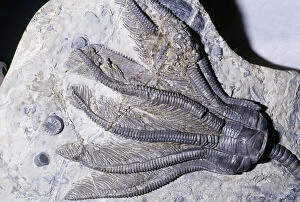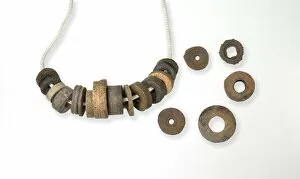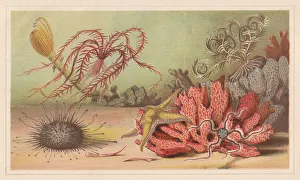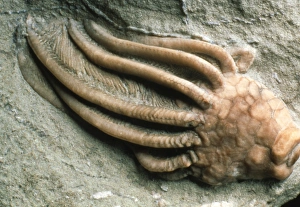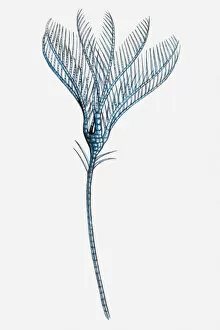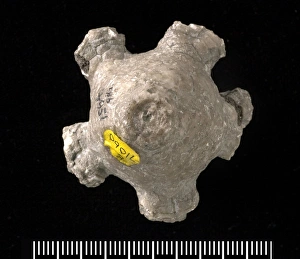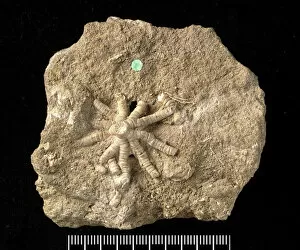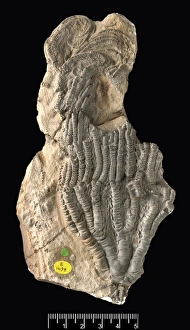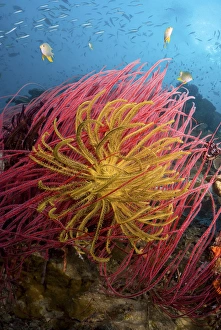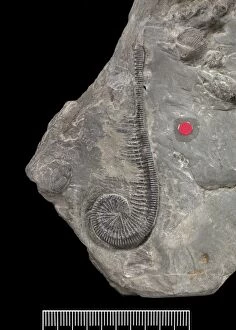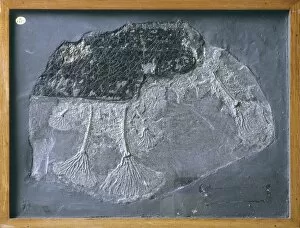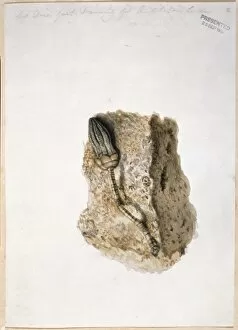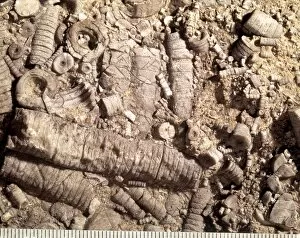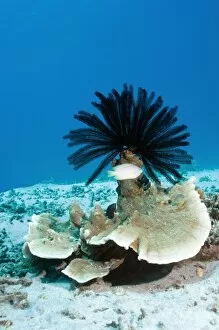Sea Lily Collection
"Discover the Enigmatic Beauty of Sea Lilies: A Glimpse into Earth's Ancient Past" Step back in time to the Triassic period, approximately 240 million years ago
All Professionally Made to Order for Quick Shipping
"Discover the Enigmatic Beauty of Sea Lilies: A Glimpse into Earth's Ancient Past" Step back in time to the Triassic period, approximately 240 million years ago, and journey to Northern Germany where the fascinating world of sea lilies comes alive. Also known as crinoids, these captivating creatures have left their mark as Crinoid Fossils - remnants of a bygone era. Immerse yourself in history as you explore St. Cuthberts Beads - delicate rosaries crafted from crinoid columnals. These intricate beads serve as a testament to the enduring allure of sea lilies throughout centuries. Dive deeper into the realm of crinoids and encounter Dimerocrinus, a fossilized species that once thrived beneath ancient seas. Marvel at its intricate structure and imagine it gracefully swaying amidst ocean currents. Transport yourself to 1833-39 with a beautifully colored engraving aptly titled "Sea Lily. " This artwork captures the ethereal essence of these marine organisms, showcasing their delicate petals reaching towards sunlight filtering through water depths. Delight your senses with Pancratium Speciosum, an enchanting hexandrian plant depicted in Plate 47 from A Selection of Hexandrian Plants. Witness nature's artistry unfold before your eyes as this exquisite flower mirrors the elegance found within sea lilies. Embark on an expedition through time with lithographs published in 1868 featuring various echinoderms. Amongst them is Pancratium Speciosum once again, capturing hearts with its timeless beauty since its initial depiction between 1831-1834. Journey across oceans to Indonesia's Papua region and marvel at Pisang Islands' diverse feather star crinoids. Two distinct varieties showcase nature's remarkable ability for adaptation and evolution – a true testament to life's resilience against changing tides. Witness Isocrinus robustus emerge from the depths of history as a fossil crinoid.

